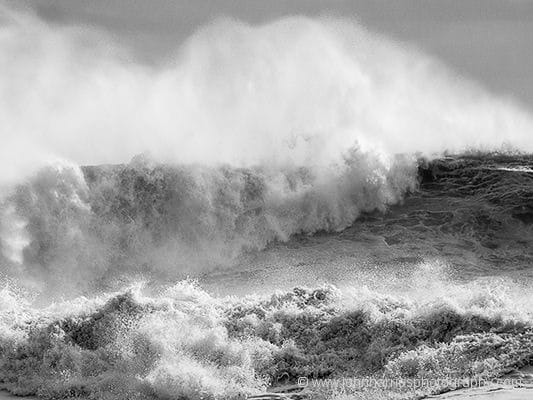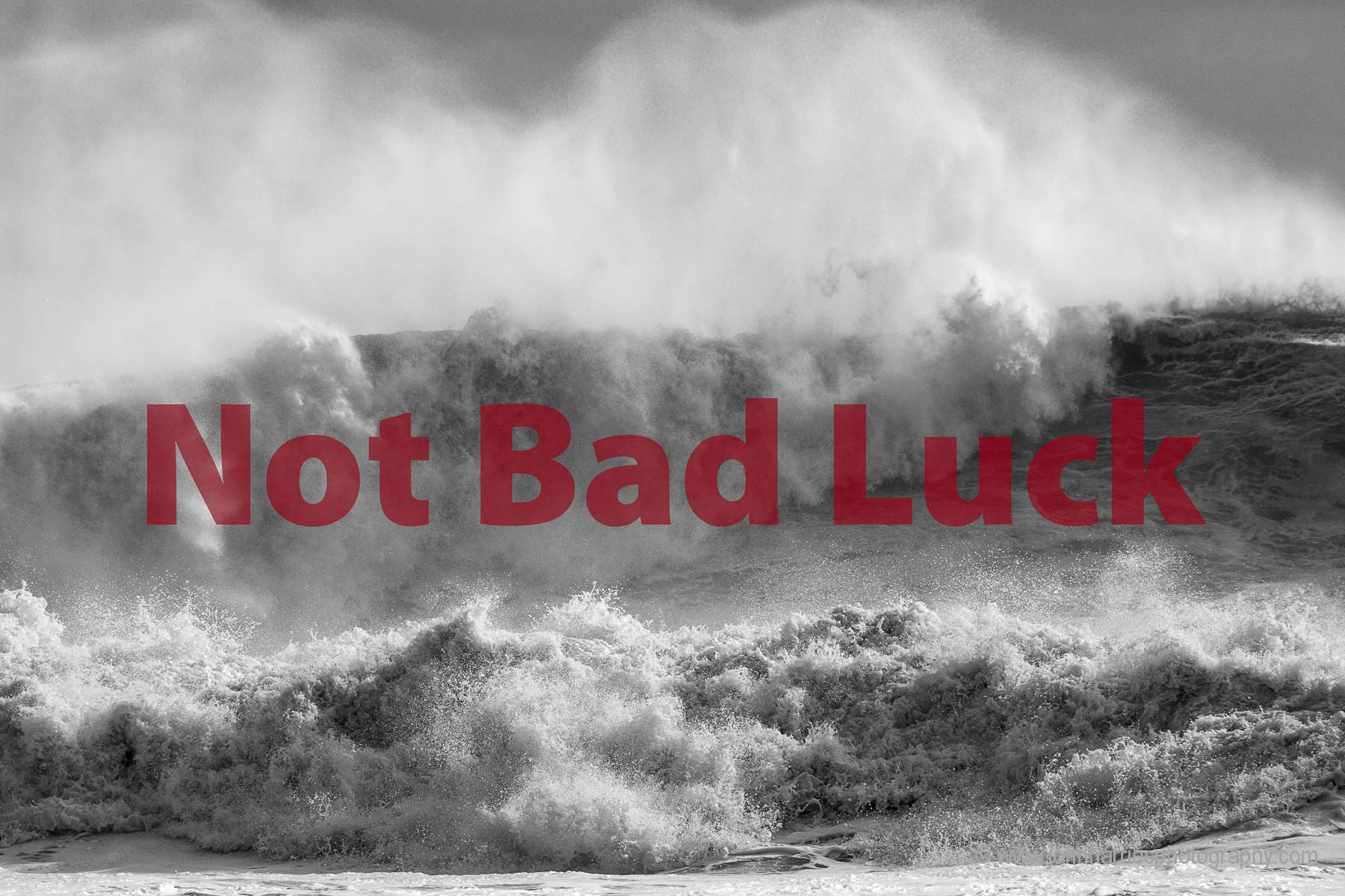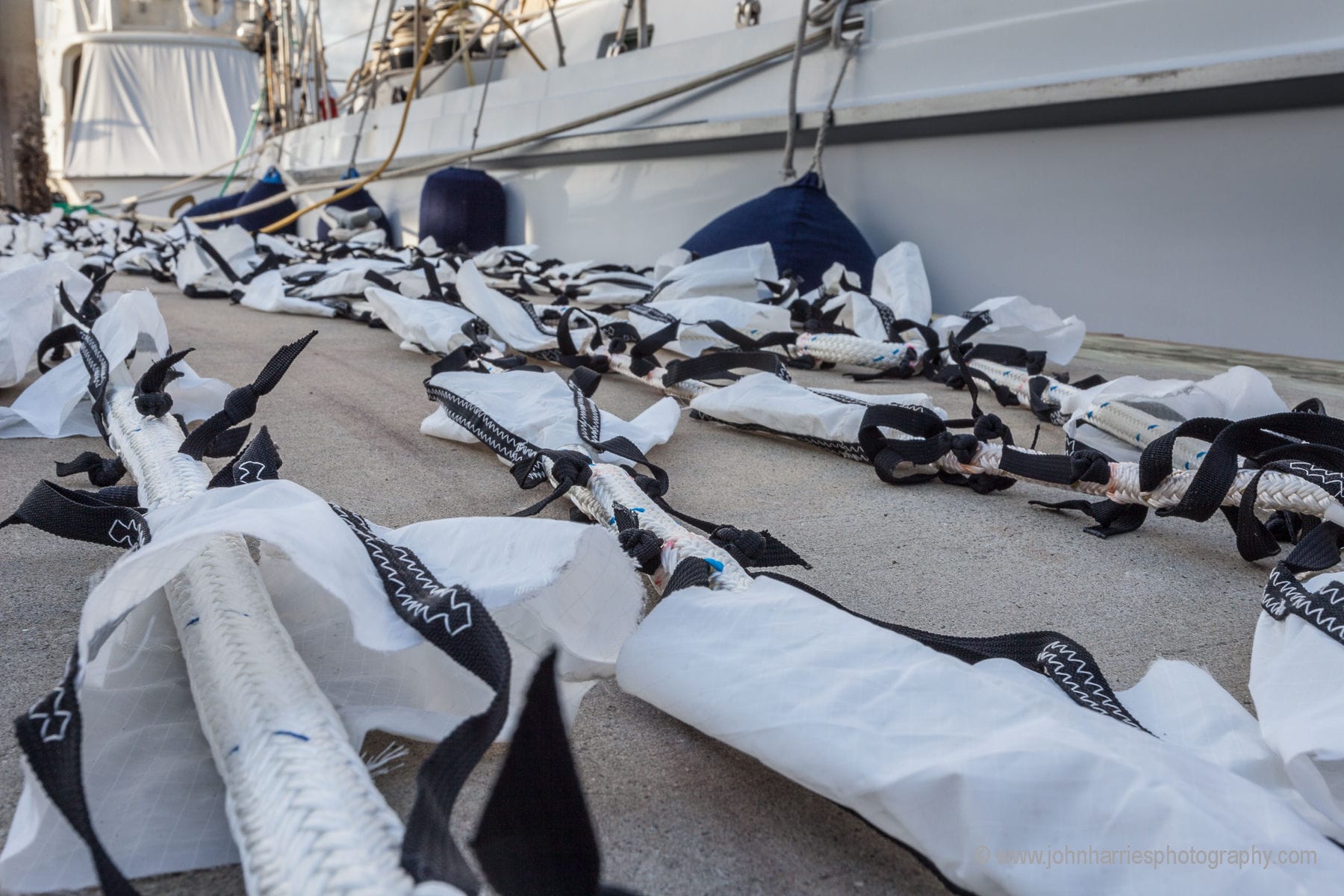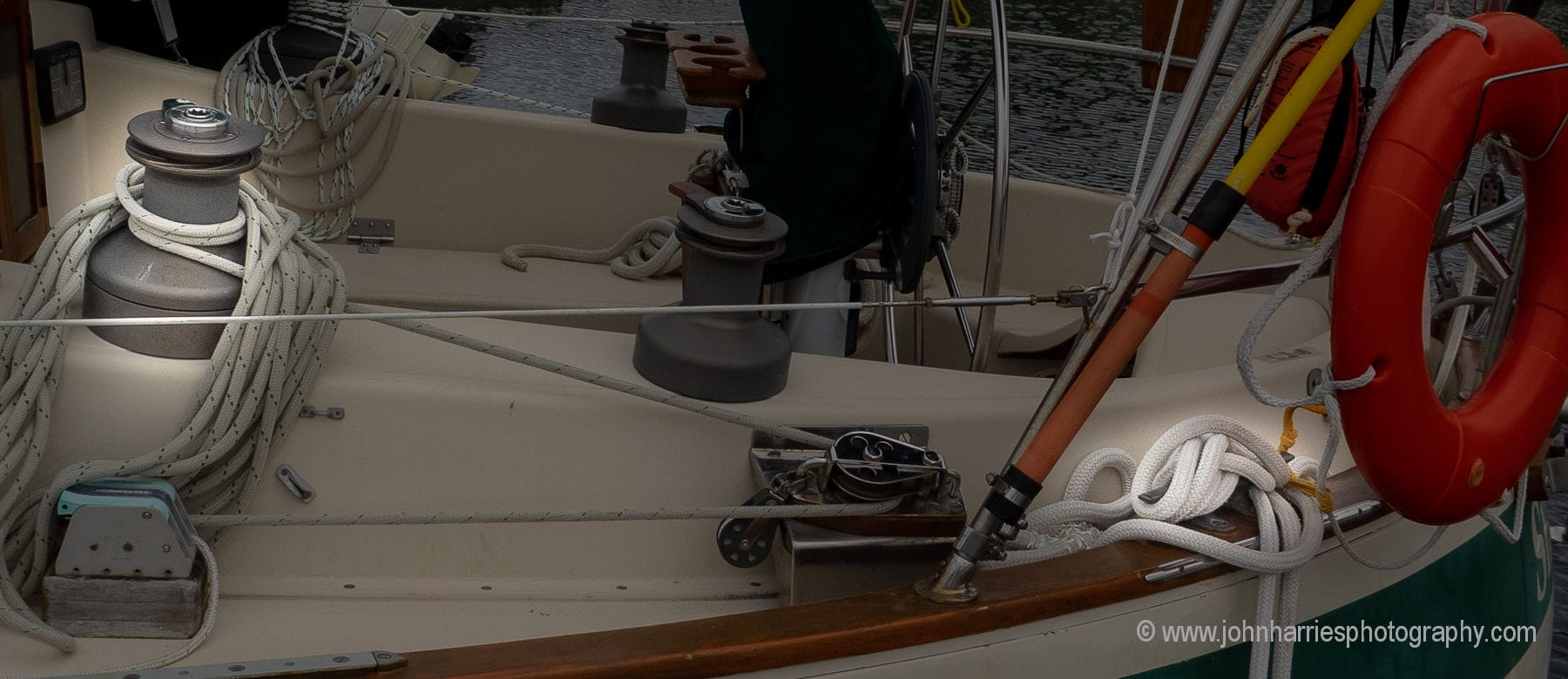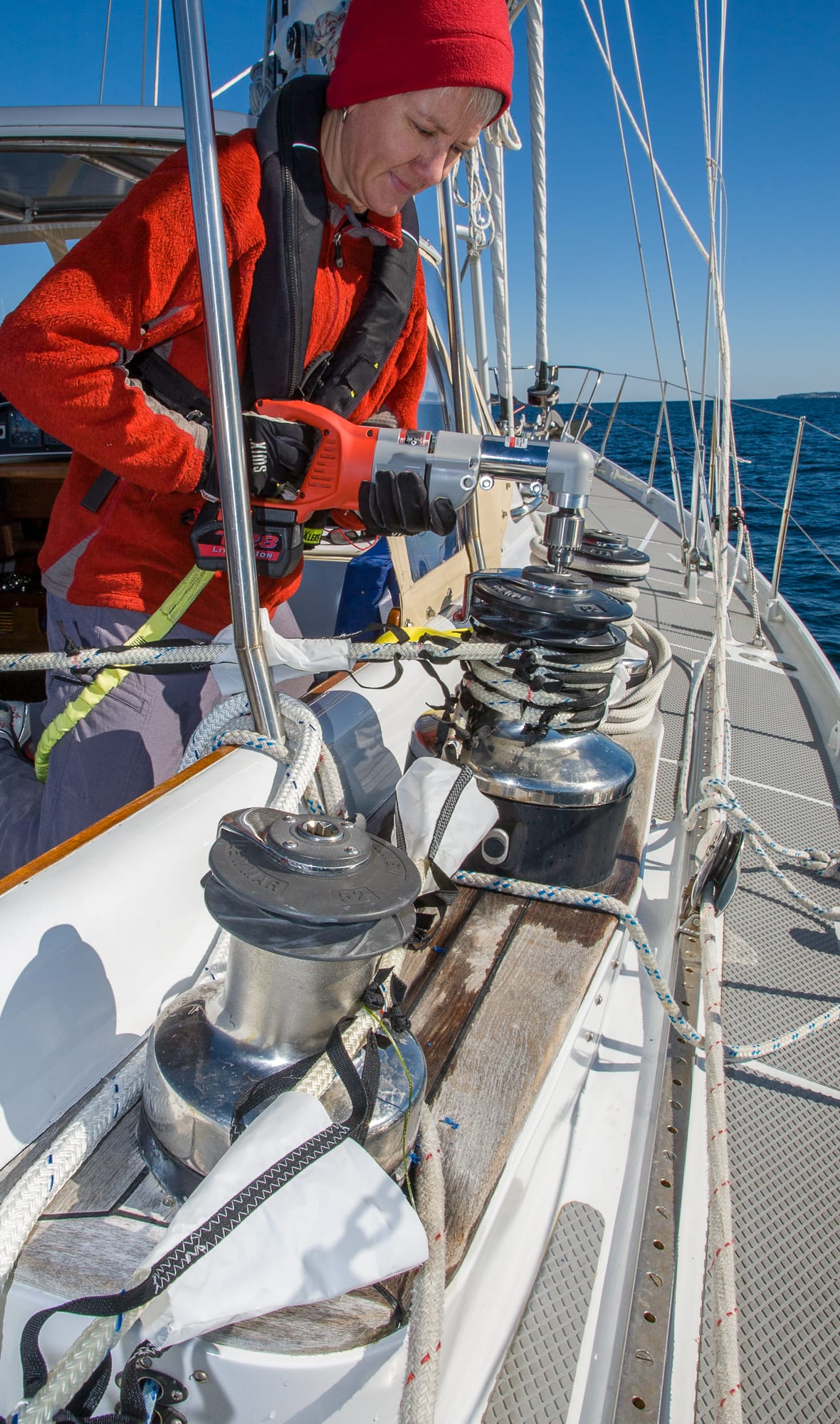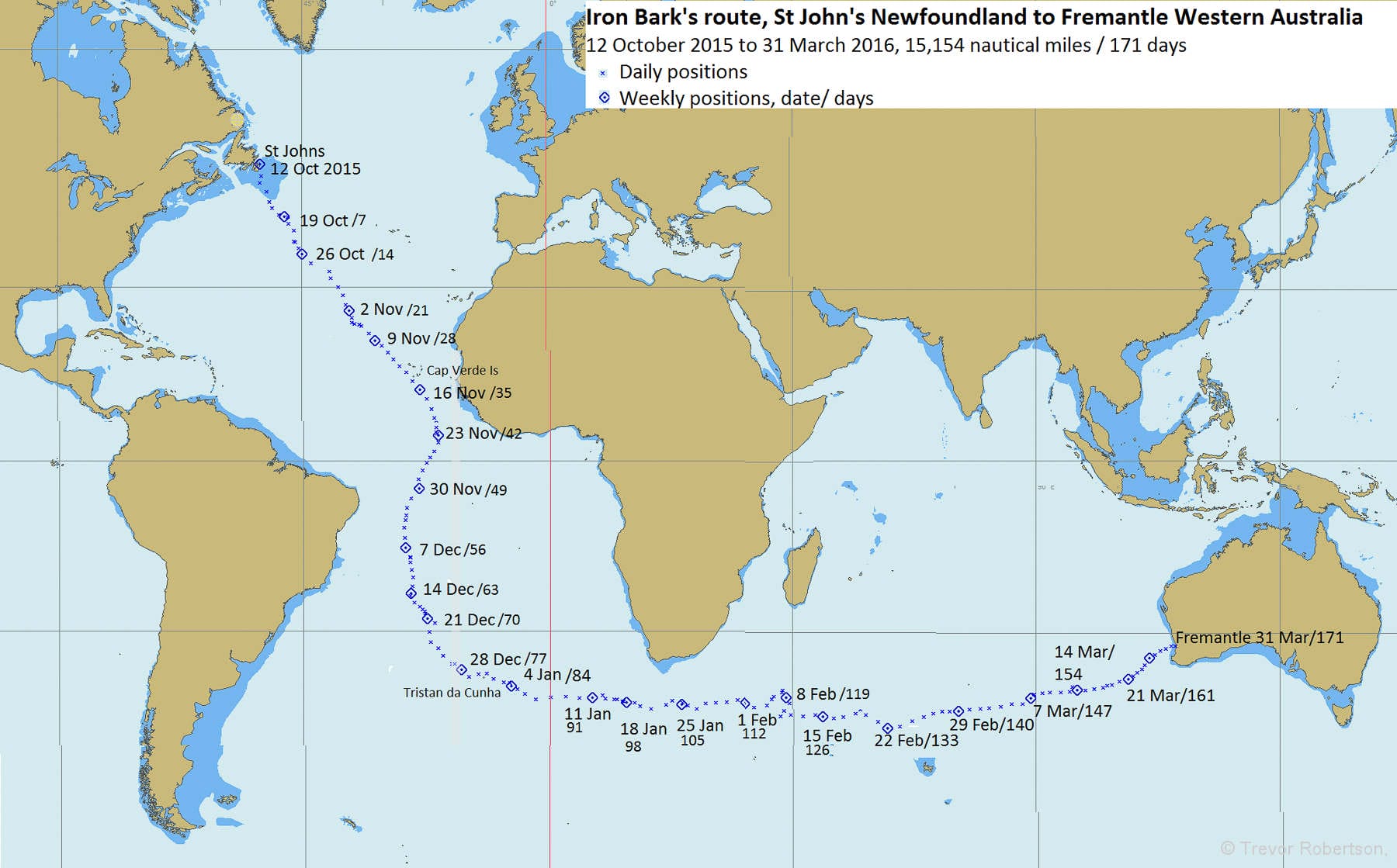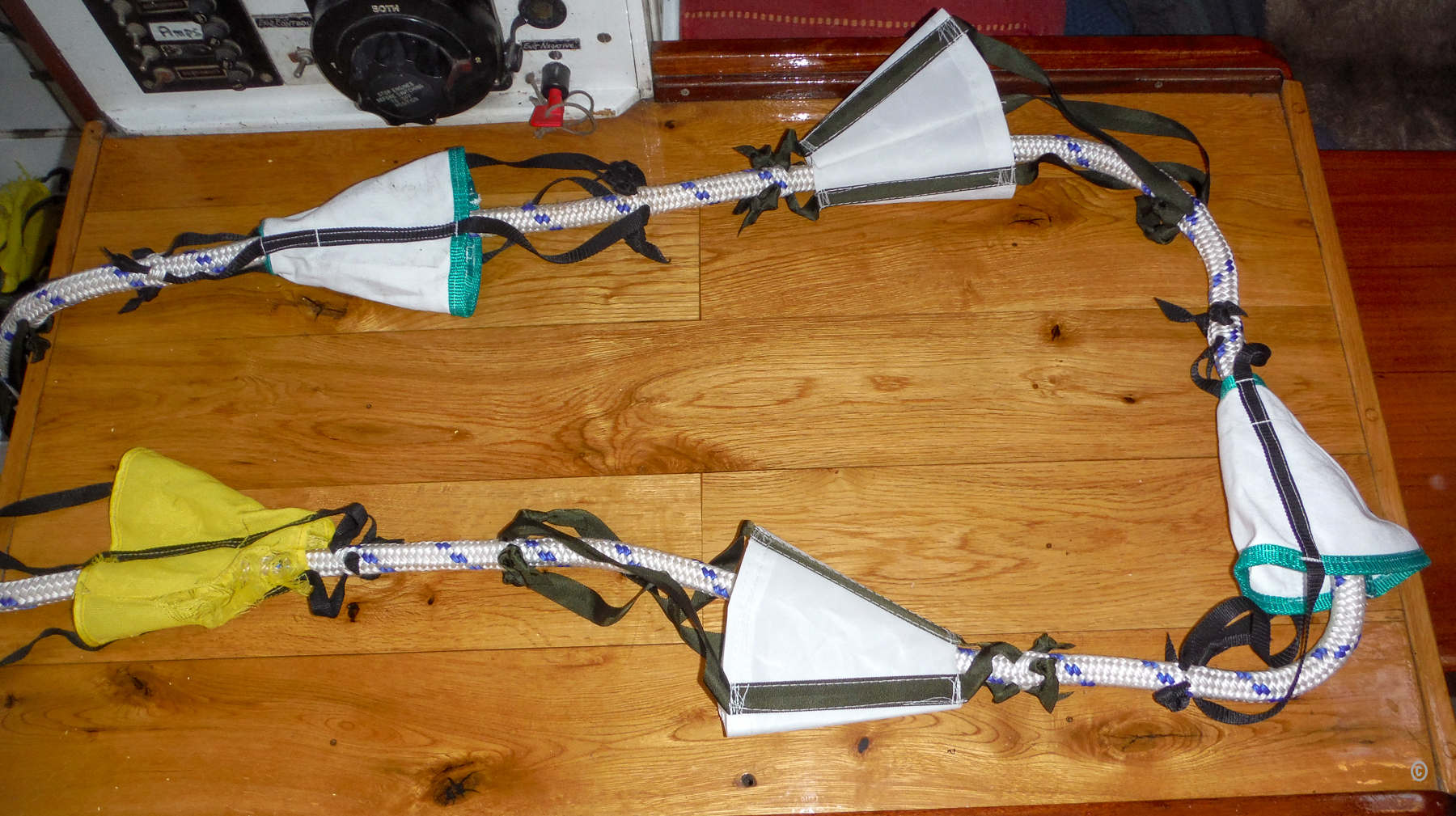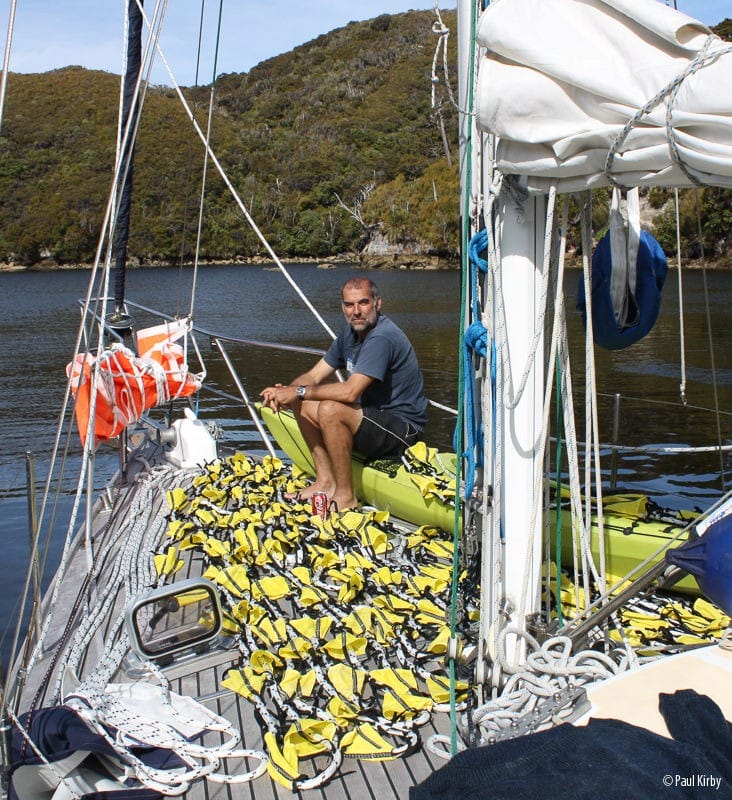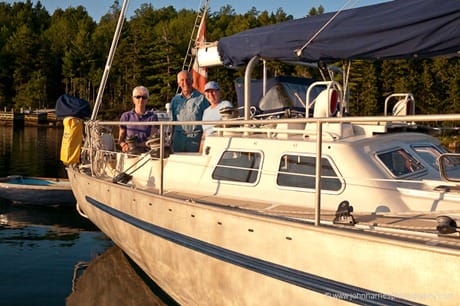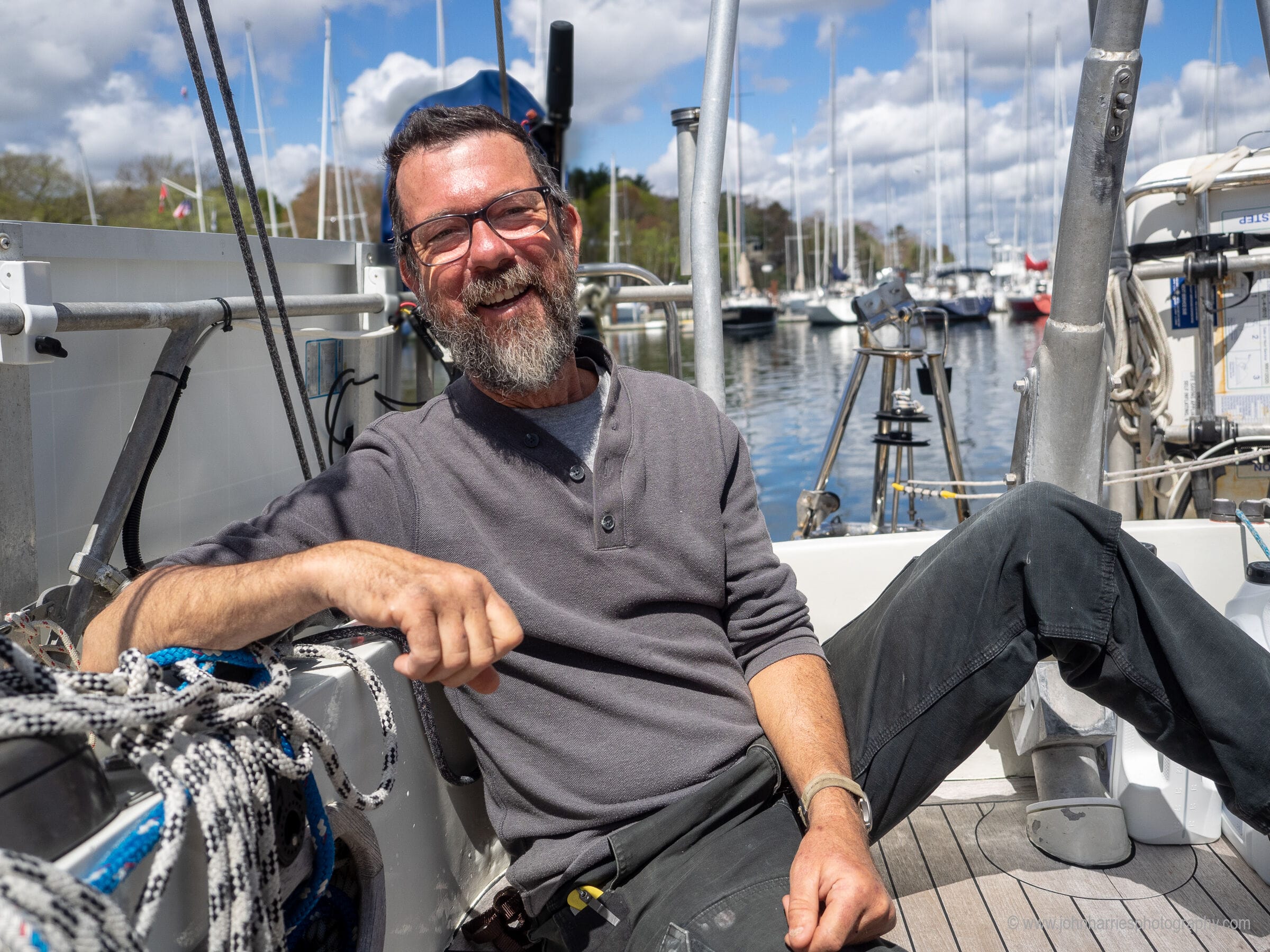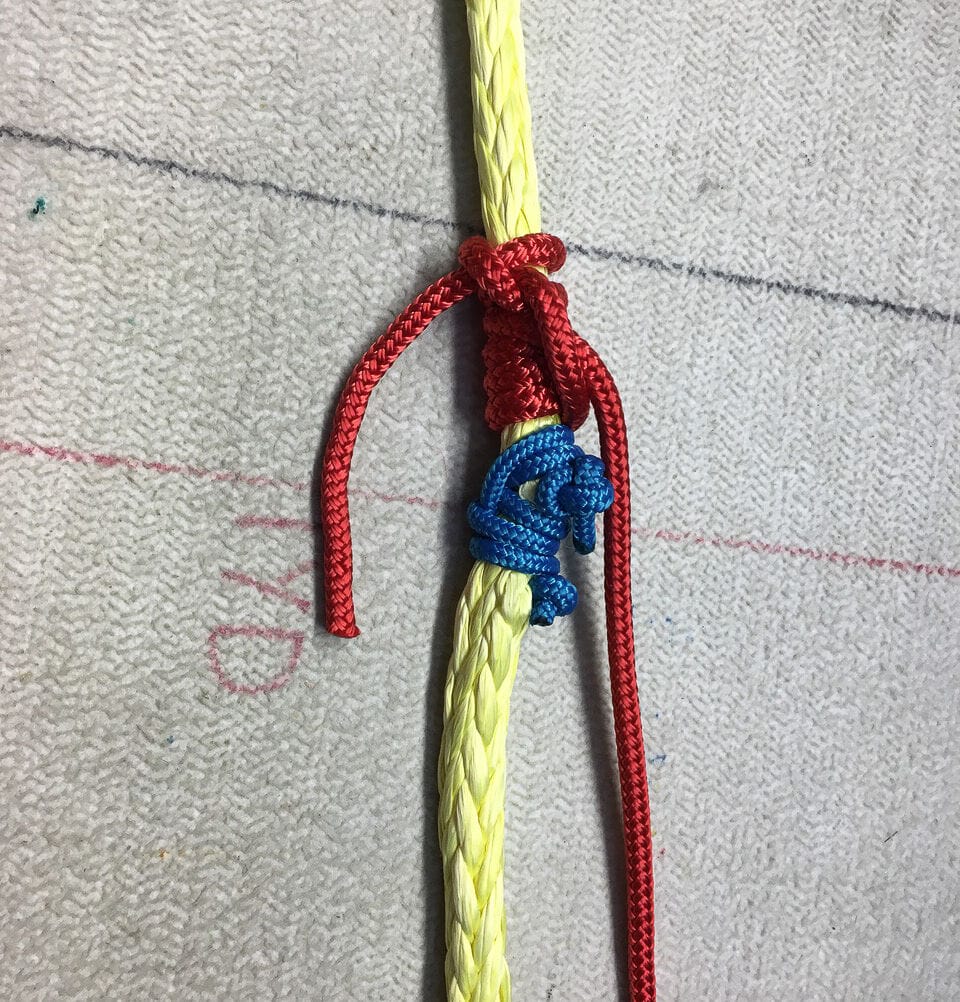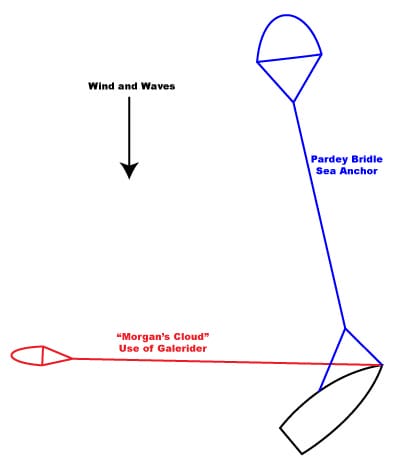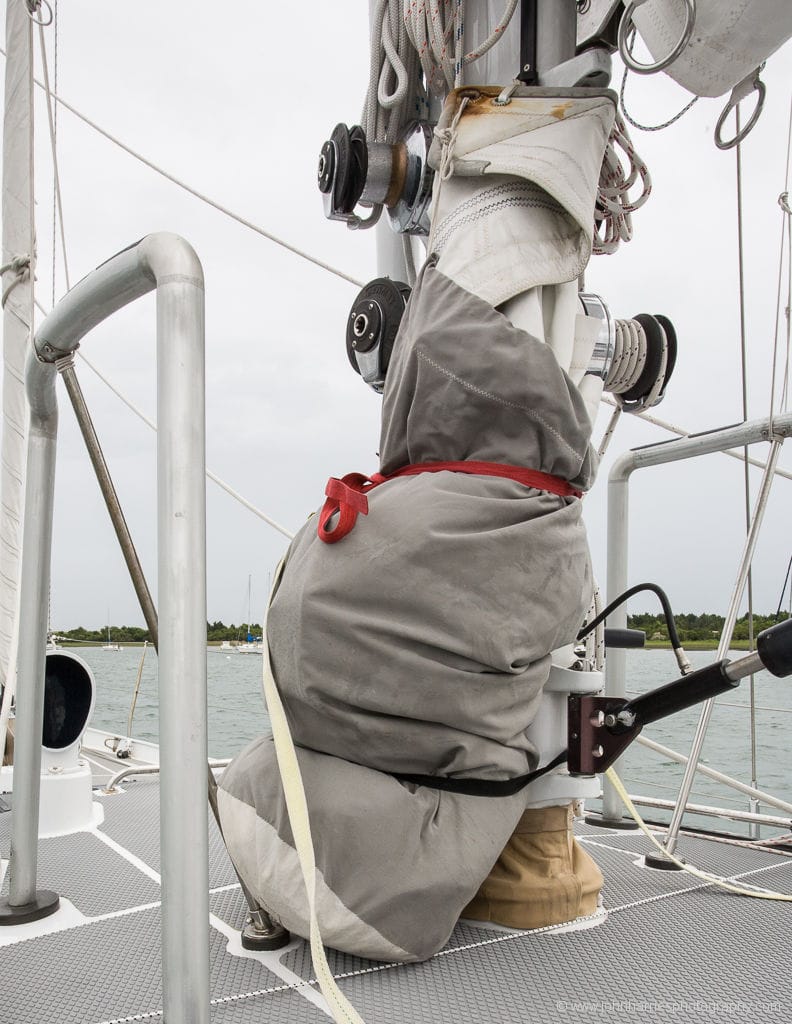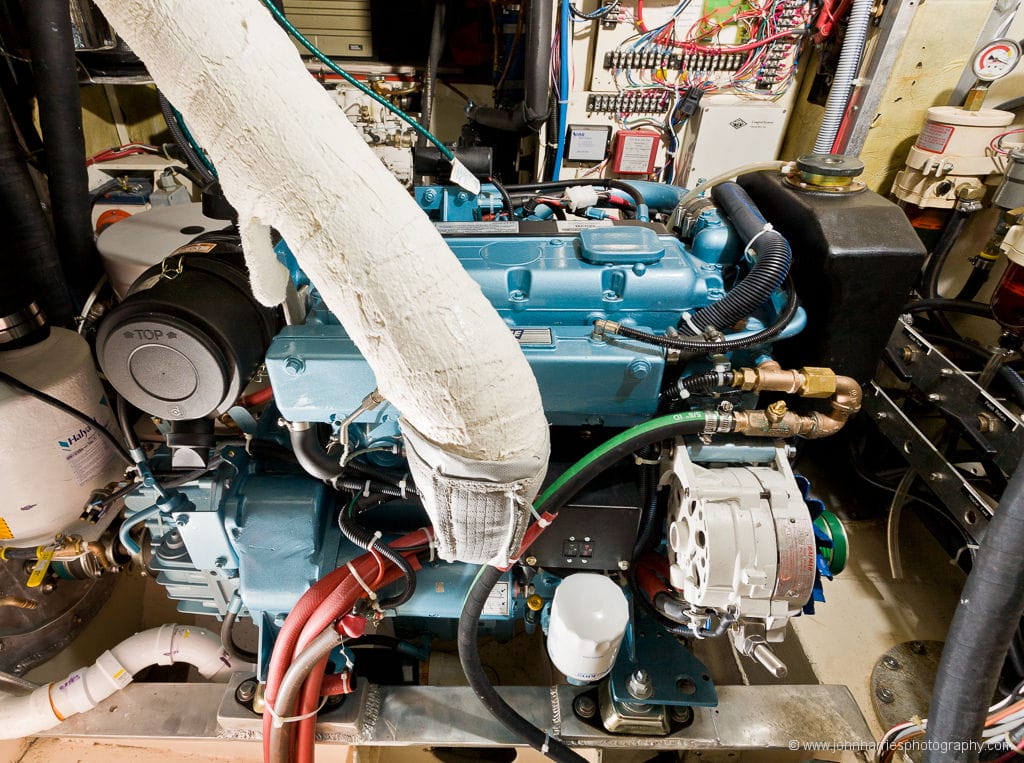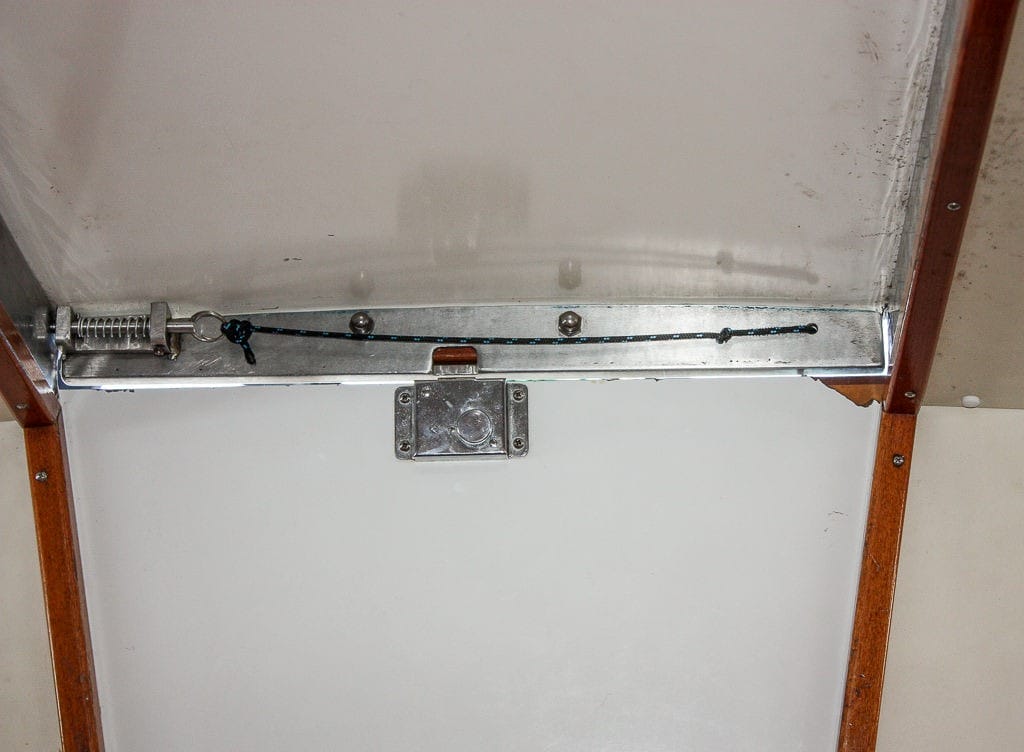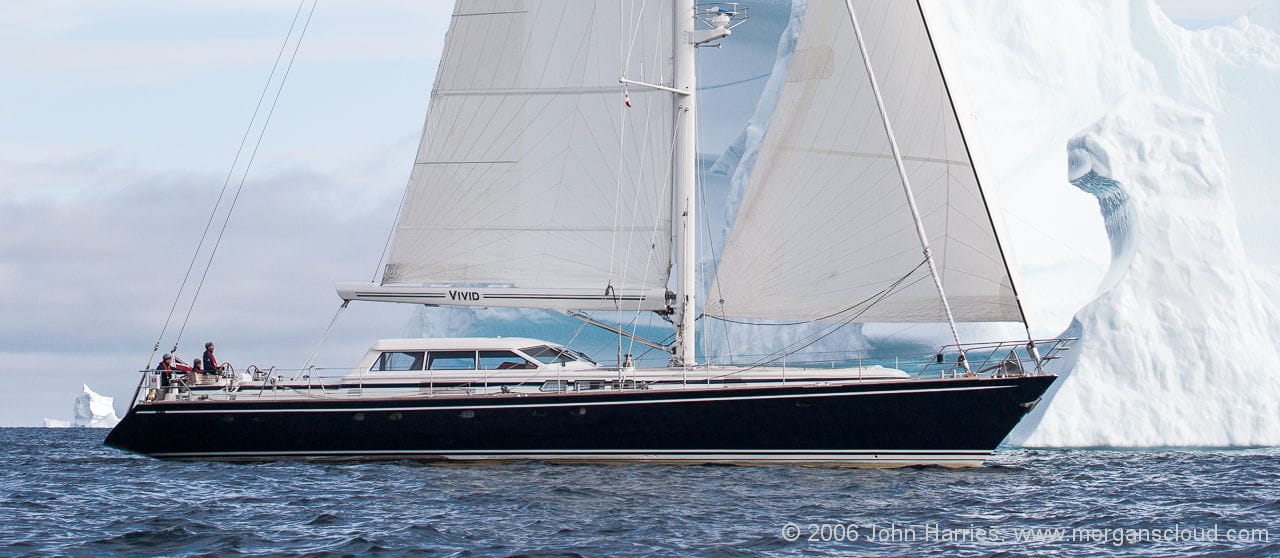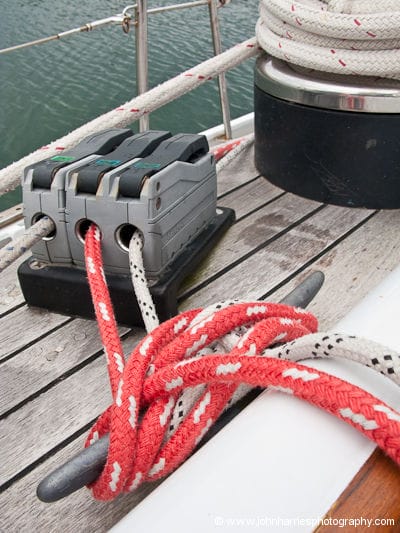Online Book: Heavy Weather Tactics
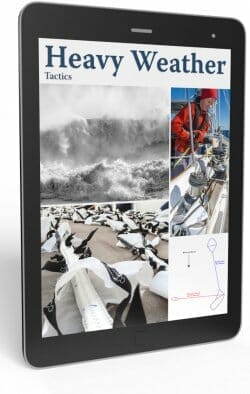
When you have spent some 45 years going offshore in sailboats and 25 years doing the same in the high latitudes, you learn a thing or two about heavy weather tactics, whether you like it or not.
In this Online Book John takes you through the options for storm survival from drogue deployment to heaving-to including step-by-step guides to putting together an easy to deploy and retrieve storm survival system system.
The book also includes real world storm survival advice from some of the most experienced heavy weather sailors of our time, as well as an all new section (2024) on surviving storms at anchor or alongside.
Click for TOC or scroll down for details
Articles in this topic:
- Introduction—We Need A System
- Goals For A Heavy Weather System
- Rogue Waves Are Not Bad Luck
- Just Get a Series Drogue Designed By Don Jordan…Dammit!
- Jordan Series Drogue Attachments And Launch System
- Alternatives to Chainplates For Drogue Attachment…Or Not
- Jordan Series Drogue Retrieval System
- Jordan Series Drogue Retrieval—An Alternative From Hal Roth
- Series Drogue Durability Problems
- Battle Testing a Jordan-Designed Series Drogue—Round 1
- Battle Testing a Jordan-Designed Series Drogue—Round 2
- Real Life Storm Survival Story
- Series Drogues: Learning From Tony Gooch
- Series Drogues: Learning From Randall Reeves
- Retrieval of Dyneema (Spectra) Series Drogues Solved
- Heaving-To
- When Heaving-To Is Dangerous
- Stopping Wave Strikes While Heaved-To
- Determining When Heaving-To Is Dangerous
- Transitioning From Heaved-to To a Series Drogue
- Storm Strategy—Fore-Reaching
- Surviving A Lee Shore
- Storm Survival Secret Weapon: Your Engine
- Storm Survival FAQ
- Companionway Integrity In A Storm
- Q&A: Safety of Large Pilothouse Windows
- Surviving Storms While Coastal Cruising—12 Strategy Tips
- Surviving Storms While Coastal Cruising—9 Tips for Anchorage and Harbour Selection
- Surviving Storms While Coastal Cruising—21 Preparation Tips
- Gale And Storm At Anchor Or On A Mooring Check List
- Summary And Conclusions For Heavy Weather Offshore Section
-
Introduction—We Need A System
2 CommentsReading Time: 2 minutesMembersRead more: Introduction—We Need A SystemMany of us buy storm survival gear, throw it in a corner of the lazarette, and head off to sea congratulating ourselves on our foresight and seamanship. But when we do that, we have not really prepared for a storm at sea. In this introductory chapter I explain why having a real storm survival system is so important.
-
Goals For A Heavy Weather System
0 CommentsReading Time: 3 minutesMembersRead more: Goals For A Heavy Weather SystemBefore discussing the actual nuts and bolts of our gale and storm survival gear and strategy, I’m going to write a bit about the goals that Phyllis and I keep in mind when we are putting together gear and thinking about strategy for dealing with heavy weather at sea on our own boat, Morgan’s Cloud—you can’t set a course until you know what the destination is.
-
Rogue Waves Are Not Bad Luck
61 CommentsReading Time: 8 minutesMembersRead more: Rogue Waves Are Not Bad LuckThe most common reason for yacht abandonment at sea is being capsized by a rogue wave. But is rogue a good description of these boat-killing waves? And are there things we can do to reduce roll-over risk?
-
Just Get a Series Drogue Designed By Don Jordan…Dammit!
114 CommentsReading Time: 8 minutesMembersRead more: Just Get a Series Drogue Designed By Don Jordan…Dammit!There are few subjects that offshore sailors like to discuss and argue about more than which is the best storm survival strategy and related gear. But it’s time to stop the debate because it’s a solved problem.
-
Jordan Series Drogue Attachments And Launch System
136 CommentsReading Time: 4 minutesMembersRead more: Jordan Series Drogue Attachments And Launch SystemYou went out and bought a Jordan Series Drogue, but now you need to put together the gear and procedures to get it safely deployed when you need it and in this chapter I share exactly how to do that.
-
Alternatives to Chainplates For Drogue Attachment…Or Not
93 CommentsReading Time: 4 minutesMembersRead more: Alternatives to Chainplates For Drogue Attachment…Or NotJohn analyzes two alternatives to chainplates for attaching a series drogue to our boats.
-
Jordan Series Drogue Retrieval System
66 CommentsReading Time: 6 minutesMembersRead more: Jordan Series Drogue Retrieval SystemThe storm struck, you deployed your Jordan Series Drogue and rode it out without problems, but now the wind is dropping and it’s time to retrieve the drogue so you can get sailing again and head for port before the next blow hits. But you are shorthanded and tired and the task seems insurmountable. In this chapter we share our tested method for drogue retrieval.
-
Jordan Series Drogue Retrieval—An Alternative From Hal Roth
27 CommentsReading Time: 4 minutesMembersRead more: Jordan Series Drogue Retrieval—An Alternative From Hal RothThere’s always more than one way to skin a cat—or retrieve a Jordan Series Drogue—so when Hal Roth, a man with 200,000 miles and three circumnavigations under his belt, makes a suggestion, we listen.
-
Series Drogue Durability Problems
79 CommentsReading Time: 8 minutesMembersRead more: Series Drogue Durability ProblemsThere have been a couple of well-publicized cases of series drogues, based on Don Jordan’s research and design, deteriorating after as little as ten hours’ use in strong gale conditions. John investigates and shares what he intends to do to upgrade his drogue.
-
Battle Testing a Jordan-Designed Series Drogue—Round 1
48 CommentsReading Time: 11 minutesMembersRead more: Battle Testing a Jordan-Designed Series Drogue—Round 1Some of us write about extreme heavy weather survival at sea based on a few experiences accumulated over decades, combined with not a little guesswork and conjecture. And then there’s Trevor. Few offshore sailors have even one-tenth the first-hand survival storm experience that Trevor shares in this article. Anyone who goes to sea needs to read every word in this chapter with great care and attention.
-
Battle Testing a Jordan-Designed Series Drogue—Round 2
47 CommentsReading Time: 9 minutesMembersRead more: Battle Testing a Jordan-Designed Series Drogue—Round 2Trevor Robinson updates what he has learned about using and maintaining a series drogue built to Don Jordan’s design. This is not theory, but true testing over a gruelling circumnavigation in the Southern Ocean, including multiple deployments in gale and storm force conditions. Anyone who goes to sea in small boats will benefit from reading this.
-
Real Life Storm Survival Story
65 CommentsReading Time: 8 minutesMembersRead more: Real Life Storm Survival StoryTheory is great to learn from but real world experience is always better. In this chapter I relate an email interview we conducted with a reader who survived a killer storm south of New Zealand using some of the techniques that I have discussed in this book. It’s a long chapter, but read it carefully because doing so and acting on the information could save your life.
-
Series Drogues: Learning From Tony Gooch
2 CommentsReading Time: < 1 minuteMembersRead more: Series Drogues: Learning From Tony GoochContinuing on with the theme of learning from the best, this chapter is about the many things we learned from Tony and Coryn Gooch about storm survival and drogue retrieval—they know what they are talking about after decades of voyaging in some of the toughest parts of the world’s oceans and Tony’s single handed non-stop circumnavigation.
-
Series Drogues: Learning From Randall Reeves
94 CommentsReading Time: 9 minutesMembersRead more: Series Drogues: Learning From Randall ReevesWe strongly believe that the series drogue designed by Don Jordan is the best storm survival option. A belief based on good science and interviewing some of the best offshore sailors of our time about their experiences. John continues that learning and data gathering process in this article.
-
Retrieval of Dyneema (Spectra) Series Drogues Solved
55 CommentsReading Time: 5 minutesMembersRead more: Retrieval of Dyneema (Spectra) Series Drogues SolvedLast summer we discovered that series drogues to Don Jordan’s design that are made from single-plat Dyneema or Spectra were extremely difficult to retrieve. We now have a solution.
-
Heaving-To
19 CommentsReading Time: 4 minutesMembersRead more: Heaving-ToAs we have shared in earlier chapters in this Online Book, we now believe that for extreme weather where large breaking waves may be present, a Series Drogue, as designed by Don Jordan, is the best survival strategy. That said, heaving-to is still a technique that not only can save your bacon in a gale, but is also surprisingly comfortable and useful for taking a break from the demands of shorthanded voyaging. In this chapter we tell you how to set up just about any boat to successfully heave-to.
-
When Heaving-To Is Dangerous
9 CommentsReading Time: 2 minutesMembersRead more: When Heaving-To Is DangerousAs wonderful as heaving-to is, done wrong it can be dangerous. In this post we tell you about when heaving-to went wrong for us, and what to watch out for.
-
Stopping Wave Strikes While Heaved-To
45 CommentsReading Time: 7 minutesFreeRead more: Stopping Wave Strikes While Heaved-ToSome of the options that we can use to solve the dangerous problem of wave strikes while heaved-to that I described in the last chapter.
-
Determining When Heaving-To Is Dangerous
52 CommentsReading Time: 4 minutesMembersRead more: Determining When Heaving-To Is DangerousSo how can we be sure whether or not heaving-to will result in a knock-down or roll-over in heavy weather? John tackles this difficult but vital question.
-
Transitioning From Heaved-to To a Series Drogue
30 CommentsReading Time: 4 minutesMembersRead more: Transitioning From Heaved-to To a Series DrogueChanging survival strategies in the middle of a storm at sea is not something that any of us want to be faced with, but here are some thoughts from John about how that might be done safely.
-
Storm Strategy—Fore-Reaching
46 CommentsReading Time: 11 minutesMembersRead more: Storm Strategy—Fore-ReachingComparing fore-reaching to heaving-to and streaming a Jordon Series Drogue as storm survival strategies as well as equipment and techniques required for safe fore-reaching.
-
Surviving A Lee Shore
35 CommentsReading Time: 4 minutesMembersRead more: Surviving A Lee ShoreIn the previous chapters we have talked about heaving-to and various drag devices, but none of that is going to help us if we are caught on a lee shore. In this chapter I write about when that exact scenario happened to me and what we have done to prepare ourselves and our boat should it ever happen to us again.
-
Storm Survival Secret Weapon: Your Engine
22 CommentsReading Time: 4 minutesMembersRead more: Storm Survival Secret Weapon: Your EngineOne of our most useful tools in dealing with heavy weather at sea is our engine and in this chapter I relate how we used ours to good effect in a nasty lee shore situation. But the sad truth is that in many cases a yacht’s engine is disabled by heavy weather making it useless at the very time that the crew need it most, so I go on to share some solid suggestions of things you can do to storm proof your engine.
-
Storm Survival FAQ
42 CommentsReading Time: 7 minutesMembersRead more: Storm Survival FAQSeveral questions have repeatedly surfaced within the hundreds of comments on our Heavy Weather Tactics Online Book. So I have pulled those together in this chapter and added my thoughts.
-
Companionway Integrity In A Storm
17 CommentsReading Time: 3 minutesMembersRead more: Companionway Integrity In A StormIt’s a sad fact that most production boat companionways are potential boat-sinkers. But it does not have to be that way. In this chapter I provide solid suggestions on how to stormproof your companionway.
-
Q&A: Safety of Large Pilothouse Windows
53 CommentsReading Time: 6 minutesMembersRead more: Q&A: Safety of Large Pilothouse WindowsEver wondered about the safety of those big pilot-house windows that we increasingly see on modern designs? John has too.
-
Surviving Storms While Coastal Cruising—12 Strategy Tips
18 CommentsReading Time: 9 minutesMembersRead more: Surviving Storms While Coastal Cruising—12 Strategy TipsMillions of words are written about managing storms offshore, but what about when coastal cruising? Here are some real-world proven strategies.
-
Surviving Storms While Coastal Cruising—9 Tips for Anchorage and Harbour Selection
42 CommentsReading Time: 11 minutesMembersRead more: Surviving Storms While Coastal Cruising—9 Tips for Anchorage and Harbour SelectionWe are coastal cruising and a storm is forecast. So how do we choose the right harbour or anchorage to ride it out in? These 9 tips will help.
-
Surviving Storms While Coastal Cruising—21 Preparation Tips
30 CommentsReading Time: 11 minutesMembersRead more: Surviving Storms While Coastal Cruising—21 Preparation TipsWe have selected a good harbour to ride out a storm, now how do we prepare?
-
Gale And Storm At Anchor Or On A Mooring Check List
13 CommentsReading Time: 3 minutesMembersRead more: Gale And Storm At Anchor Or On A Mooring Check ListJohn shares the checklist he uses to prepare for a gale or storm when at anchor or on a mooring.
-
Summary And Conclusions For Heavy Weather Offshore Section
19 CommentsReading Time: 3 minutesMembersRead more: Summary And Conclusions For Heavy Weather Offshore SectionWe have covered a lot of ground and many details in this Online Book. So I have ended with a chapter the key points in this chapter.

